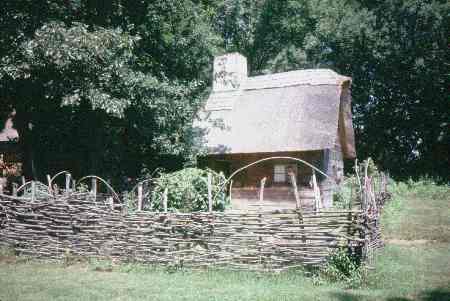
Old Salem Village
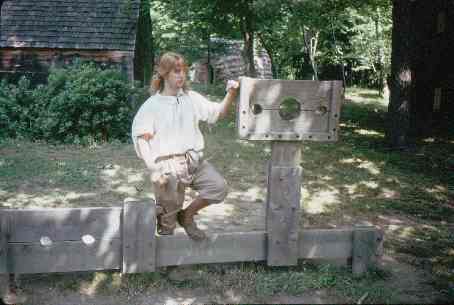
| Route 66 | Cities | Beaches |
 |
Old Salem Village |
 |
|
Old Salem Village is similar to Plimoth Plantation. The two colonies were alike, and their interpretations are alike. However, there were differences in the colonies, and their interpretations differ. Old Salem was actually restored in 1930, before Plimoth Plantation. Plimoth historians used Old Salem as their model. The Puritans, under Roger Conant, founded Salem in 1626, six years after the Piligrims founded Plimoth. Conant had actually been a member of that original Mayflower voyage, but had become disillusioned with Plimoth Plantation, and left. |
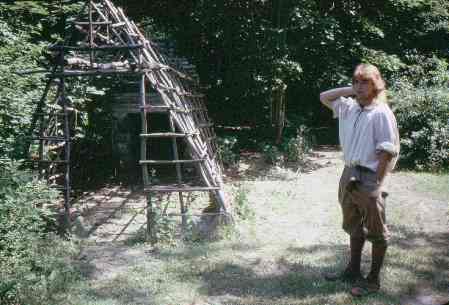 |
He was convinced that the Pilgrim struggle was because they had included "Strangers," those of non Puritan beliefs, with their group; they arrived at the wrong time of year; and they did not have the necessary experts with them. The Puritans carefully chose their members, left in late Winter so as to arrive in late Spring, and brought craftsmen in everything from home building to iron working. They knew they would still have a rough first few years, but they hoped to avoid losing half the group in the first Winter. And they did. |
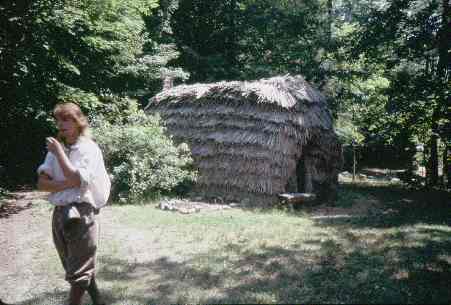 |
While the Pilgrims used the Mayflower for shelter the first Winter, lived in dugouts the second Winter, and finally got crude shelters built for the third Winter, the Puritans set up lean to frameworks immediately (above, center) and over laid them with thatched roofs (left). The result still looked pretty crude, but made a warm dry shelter. With immediate shelter needs satisfied, the construction crews worked all Summer and Fall on better homes, the craftsmen set up to practice their specialties, designated men hunted and fished, and the general population planted and tended the gardens. By the first November, the Puritans were much better off. |  |
|
Their second year saw them living in the wooden thatched roof homes seen above right and here. They had full fireplaces and sleeping lofts (a partial second story under the sloping rooves). While the Pilgrims relied heavily on the Wampanoag to teach them how to farm, the Puritans came with their own knowledge base. Instead of the hill method, they used raised beds which in the cold northern climate allowed the sun to warm the soil much better for earlier germination. They wove thatch fencing to keep the animals out, and build sunning racks to dry their fish, as shown at right. One major difference was that the Pilgrims thought they were coming to a site much further South and only ended up in Plymouth by mistake. The Puritans knew they were coming to Salem. They chose the location for its excellent harbor and for its nearness to the world's greatest fishing grounds. |
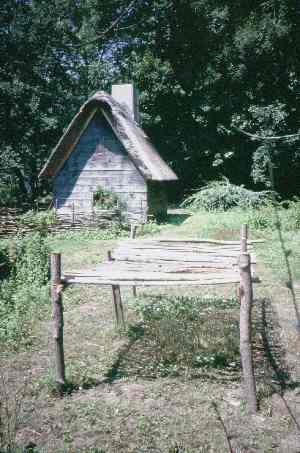 |
Although they departed from it later, the Puritans came with a vision, one quite different from the Pilgrims. The Puritans had met with the fishermen who were coming over to New England during warm weather, camping out, fishing the Stellewagen and Georges Banks, and selling their catch back in England. The Puritans planned to build a permanent colony and support themselves by catching those same fish, drying and salting them and shipping them back to England and possibly Europe. They knew they would need hardy fishing boats and larger transports to ship the fish back. They knew there was heavy forest nearby and planned to build those boats and transports in their own harbor. While the Pilgrims saw themselves as farmers who might fish to supplement their diet, the Puritans saw themselves as fishermen who would garden to supplement their diet. Given the richness of the North Atlantic and thin Massachusetts soil, clearly the Puritans had more foresight. |
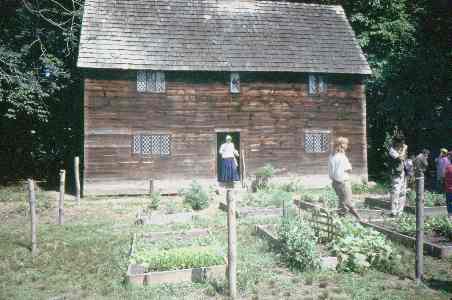 |
But fishing, farming and any other economic pursuits were just means to support the colony. The Puritans came to The New England to pursue their own religion. They were Puritans in that they wanted to "purify" the Church, stripping it of Popes, Bishops, cathedrals, idol worship (statues in the church, as the Virgin Mary); pagan rituals (confession, holy rosary and crossing oneself); and nonBiblical teachings such as Purgatory, Banns, and Intercession. The Puritans wanted to return to a very fundamentalist Old Testament religion. A Puritan church was a simple building, not a prideful edifice. A Puritan service did not include music or embellishment. | 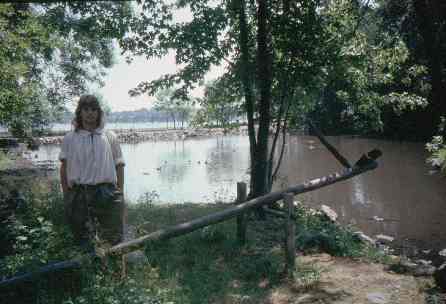 |
| The town's first full two story building was the Meeting House (above left). They held four hour services here every Sunday morning, Sunday evening and Wednesday evening. Attendance was mandatory. There were no seats; everyone stood the full four hours. If someone fainted from the heat, those around them held them up until the end of the service. Notice the glass windows of this 1640 building. The homes of that year still had mere wooden swing out shutters, as at right. Church Council also functioned as the town council. Salem was a classic Theocracy. The Church passed and enforced all laws. | 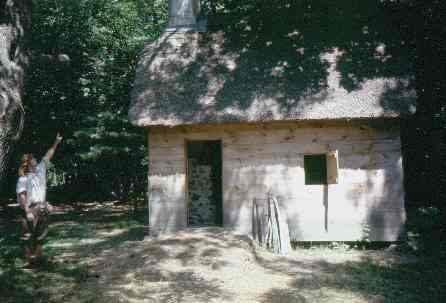 |
Punishment was a major concern of the Puritans. They believed a person could not go to Heaven if he died with a blemish on his soul. Once he sinned, a person's soul had to be cleansed by punishment. They had the stockades (top right), the dunking stool (above right), and the scourge (top left, laying on the table to the right). A scourge was a whip with nine leather strips, each ending in a metal star sharpened to a razor edge. A person would take off their shirt and lash themselves on the back a certain number of times for a certain sin, as in Scarlet Letter |
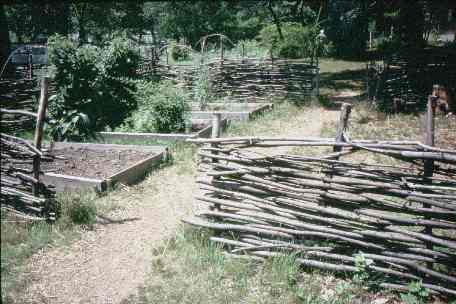 |
The Puritans believed Work was Holy, a celebration of God on Earth. They believed God bestowed his Bounty on those who helped themselves. So when they were not in Church, they worked. The Puritans did not believe in any form of recreation beyond childhood. They allowed their children toys, but once they were old enough to help the family in its chores, childhood was over. Old Salem Village was right on a fine beach, but the Puritans did not swim in the ocean. They did not believe in games or dancing. They thought Christmas and Easter were pagan holidays ("Christ never saw a Christmas Tree or a rabbit delivering eggs"). | 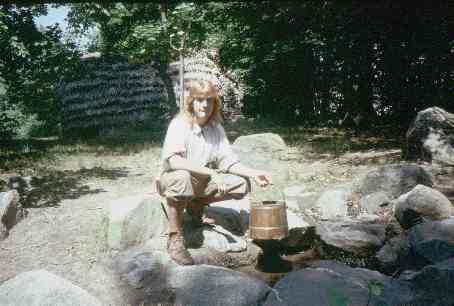 |
| All of this sounds grim, but the Puritans came to found an Empire and wanted no distractions. They hybridized plants to produce varieties suited to their short growing season (notice raised beds, above left). They composted fish,leaves, seaweed, kitchen scraps, and cuttings into a rich mulch which they mixed into their soil until they had beds producing plentiful harvests. They learned from the Indians and the Portugese where the fishing beds were and how to cast nets, lay lines, string traps and otherwise harvest the ocean. They continually improved boat design and building techniques until they were producing the finest fishing boats in the world, then worked their way up to cargo ships and finally created the Clipper Ship. They made their own candles (right), and their own buckets (above right), which held water if the wood was wet. If a bucket was dry, they dipped it in water, held it up as the water ran out, then the wood swelled, the joints sealed, and the bucket was fine. |
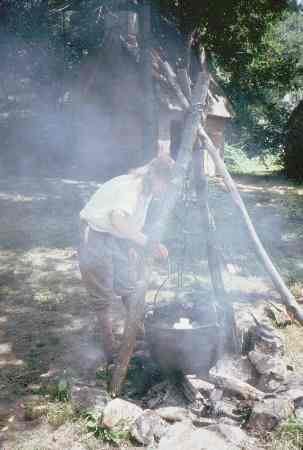 |
By 1650, the Puritans had become among the world's great craftsmen in every category. Notice at lower left the spinning wheel, glass window, finely detailed baskets, and other items. At lower right is a bellows, which they used to superheat a flame so they could work with iron. They searched the area for a good stream coming down off a steep hill near water's edge, and built America's first iron foundry (see Saugus). Their 1627 attempts at furniture were crude, but by 1640 it was of such quality they were able to sell it back in England, and today their Early American or Colonial furniture is of great value among collectors. While Miles Standish, John Alden and others eventually left Plymouth to homestead large farms further out and found new villages, Salem's people made their primary living from the sea, so they stayed in town and concentrated the leadership in a single community, ratcheting up its prosperity year by year. |
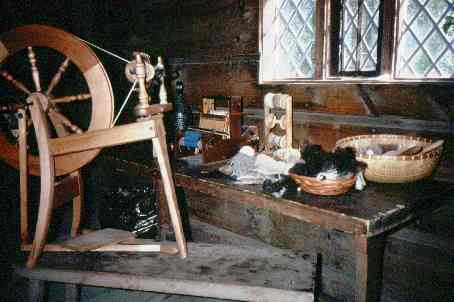 |
Old Salem Village differs from Plimoth Plantation in several ways. Plimoth exists forever in 1627, its characters speak in the language of the day, there is an adjunct Wampanoag Camp, and it has an elaborate visitor center, restaurant and educational programs. Salem sees itself as a museum with succeeding displays of each time period. A guide gives you a narrated tour (ours appears in many of the photos), and although he is in historical costume, he speaks in modern tongue. There is no restaurant, Indian camp, or extended educational programs. The visitor center is modest. But Old Salem is still wonderful and worth a several hour visit. | 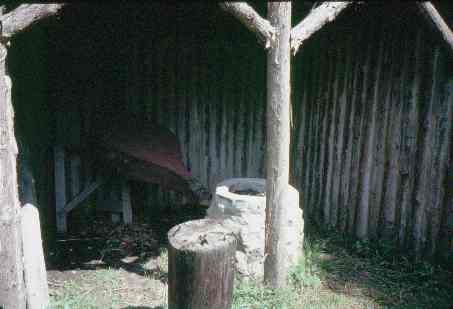 |
|
|||
|